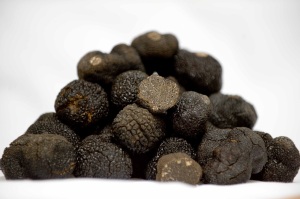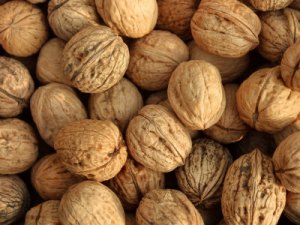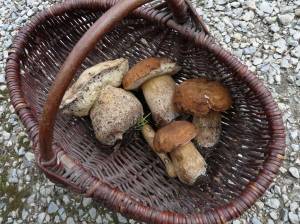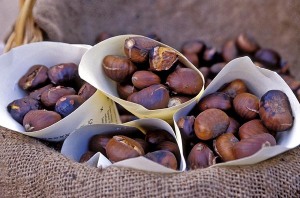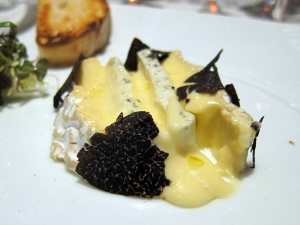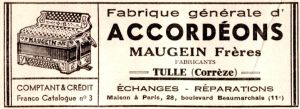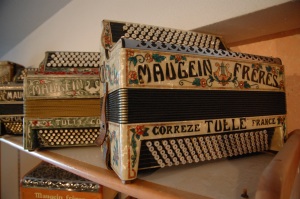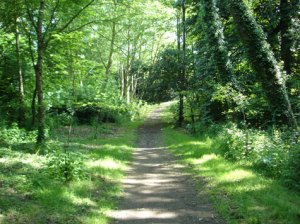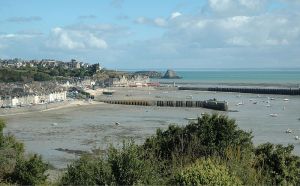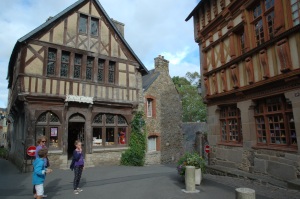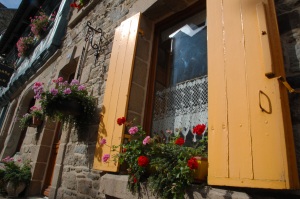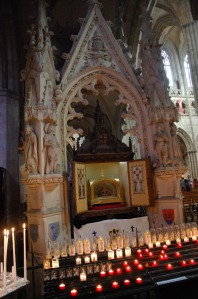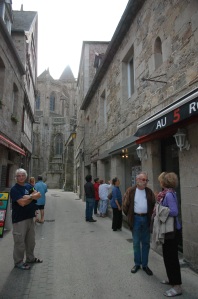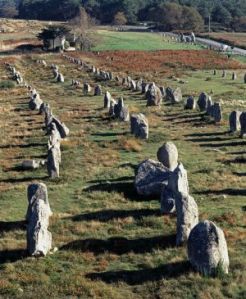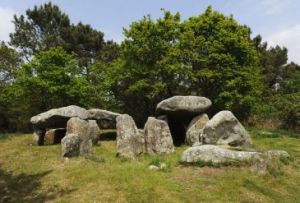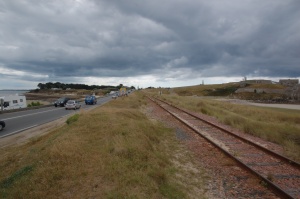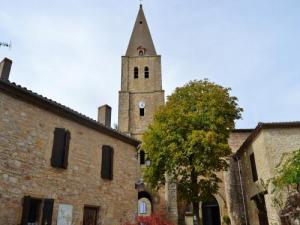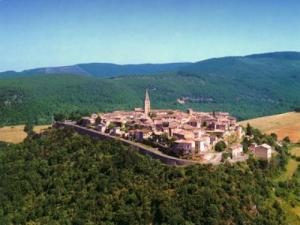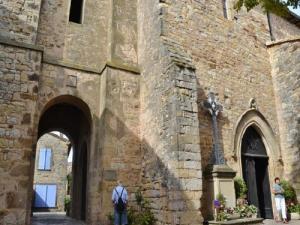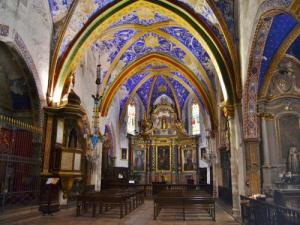"What was I thinking?" I kept asking myself, sometimes out loud.
Two
or three months ago, my friend Marie and I decided to go for a walk. It
was a walk around Lake St Ferreol, which was created some years ago
(1667-1671) by Pierre Paul Riquet as an integral part of the Canal du
Midi. Monsieur Riquet needed to provide a sufficient water reservoir to
allow the locks on the Canal du Midi to function year round, even in the
dry summer season. He was a very clever man.
 |
| Pierre-Paul Riquet, creator of the Canal du Midi |
Anyway, the walk (in French called a
randonnée)
was 12km in distance. It was a highly organised affair, with tents,
brightly-shirted organisers and marshalls, a super sound system,
motivating loud music, a band later on, lunch (if you ordered it), and
breakfast too if you got there on time (croissants and coffee). There
were lots of runners too,
mostly runners in fact, and they sped
past, under and over us, none of them looking too happy I have to say.
It was much more pleasant walking and chatting, well, until the
torrential rain started...
But that was some weeks ago, and this
weekend I had a 14km walk to look forward to, without Marie though who
was going to a(nother) party.
"I'll be fine, " I thought. "I'll
take my time and enjoy the walk. And 14km isn't that much further than
12km, and today it won't be raining! What luck!"
I arrived in
Verfeil at 8.30am. Many, many people were already there (hundreds) and
parking was way down the street and around the corner, meaning a good
warm-up walk just to arrive at the registration venue. At 9.05am the
walkers set off, "C
inq, quatre, trois, deux, un, allez!", and
with happy memories of the start of the cross-country run at Dannevirke
North Primary School when I was a nipper sparkling in my mind, I set off
at a good pace. We strolled through the lovely village of Verfeil, with
cheers and clapping from the locals, balloons, and a brass band
playing, all to encourage us on. The runners had left five minutes
before us, and once we reached the little country lanes it was clear
that hundreds of feet had passed this way before us. The mud was
impressive, helped by pretty constant rain over the previous two days.
But it was lovely. There's nothing I like more than a walk in the French
countryside, especially with the wonderful walking trails that take you
hither and thither off the regular roads and through to private quiet
seclusions.
 |
| Like this, only muddier... |
The
first five to eight kilometres passed quite nicely. I was feeling the
pain but it was a nice pain. I was missing Marie though and chatted
aloud to myself at times. At about 10 kms, my thoughts changed
dramatically. "What the feck am I doing this for?? Why couldn't I be
happy with a 20 minute walk around the block from my house?? I'm
sooo
tired! I want to stop!" Then I remembered something really important: a
sneaky ploy to keep the runners and walkers going. On the last walk, as
Marie and I were getting ready to throw our toys out of the pram, we
stumbled across a tent in the middle of the mud full of drinks, snacks
and crepes. Cor! And again on this walk, after almost losing the use of
my limbs as I forced myself to keep going just a bit further, I smelt
the sausages, and I heard a French man running the other way shout, "
Vous êtes presque à les saucisses!!" (You are almost at the sausages!) I just about wept.
(In
fact, you see quite a bit of 'Toulouse sausage' around as you take the
walking/running trail, as the men from Toulouse are not ashamed to
relieve themselves as the need arises, in full view. It's very
refreshing!)
I never feel like drinking Coke, but this time I did,
and I also grabbed dried fruit, cheese, and a wedge of bread to stuff
my very own portion of barbecued Toulouse sausage inside. The nice man
manning the BBQ had about fifteen of these lovely curled up sausages
sizzling away. I ate as I walked and I felt good.
 |
| Toulouse sausage |
The
vertical climbs didn't feel so bad after that, and I think I was
basically numb to any more slides in the mud, so I got on with the job. I
kindly let a few walkers pass me so that they could feel better about
their progress, and I needed to look at the view anyway. I crossed a
road where one of the marshalls directed me with, "
Tout droit, Madame! Tout droit!"
as I was about to take the easy path back to the village rather than
cross muddy fields again. And I passed so many laden figs trees I just
about cried. I love figs but I didn't have the capacity left to stop and
get any. Damn.
 |
| Too-delicious figs |
So
eventually a nice marshall said that there was one more kilometre to
go. He didn't mention the final vertical climb to the finish line. One
runner was cussing fiercely as her two male companions slowed down to
encourage her on, and then they let her run ahead and finish before
them. So French! So gentlemanly!
And I finished too. I don't know
what my time was and I didn't care. It was over. I could go home. I
could stop moving; no, wait, I had to walk back to the car. Thankfully
the car started (it has been known not to) and I a little deliriously
drove home to my lovely family who were full of finds from the local
vide grenier (sort of a car boot sale but spread through the streets) at Auzeville.
My
conclusion is this: the pain is over, and I loved it! I want to do it
again! And the next one is on a shorter course in Verfeil, and AT NIGHT!
to raise money for French Telethon that supports lots of charities. I'm
going to drag Marie along whether she likes it or not,
and our friend Maggie. It is obligatory to wear little head torches, and it's only 10km, and there's going to be mulled wine (
vin chaud) at the finish line. Hurry up the 7th of December!
Read more on
www.trailducassoulet.fr
and,
http://en.wikipedia.org/wiki/Canal_du_Midi
and,
http://en.wikipedia.org/wiki/Pierre_Paul_Riquet
and,
http://www.bonrepos-riquet.fr/-Le-Chateau-de-Bonrepos-Riquet-.html?lang=en
 |
| Chateau Riquet at Bonrepos-Riquet, the home of Pierre-Paul Riquet |
(p.s.
if you pre-ordered lunch, at registration today you were given a
ceramic bowl and a tin of cassoulet from Castlenaudry for lunch, which
is Toulouse sausage, other meats and white beans. It's very, very
filling and means nil-by-mouth for the next couple of days. And of
course, the
salle (local hall) was lined with chairs, and
tables (with tablecloths, cutlery and wine glasses), which is so very
French for an after-event luncheon.)
 |
| Cassoulet in the traditional ceramic bowl |

